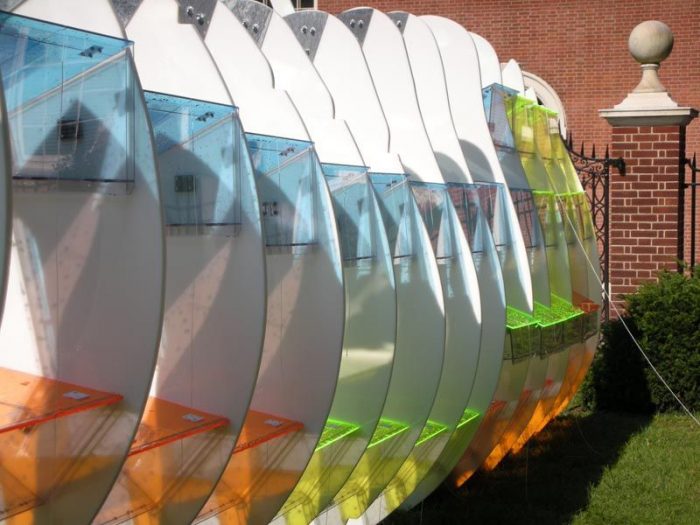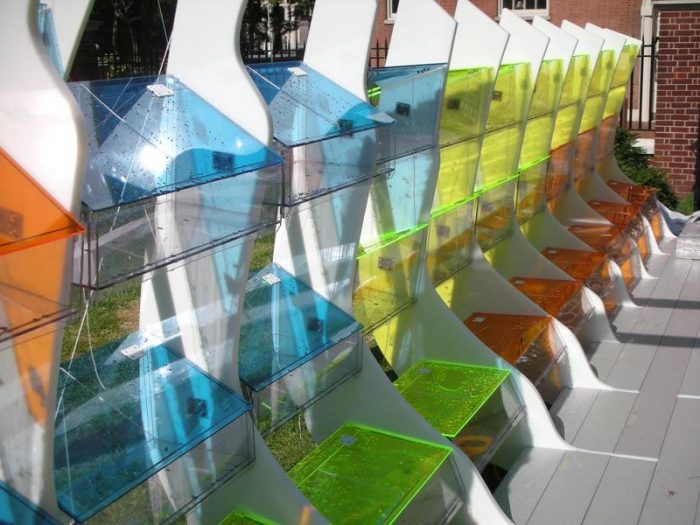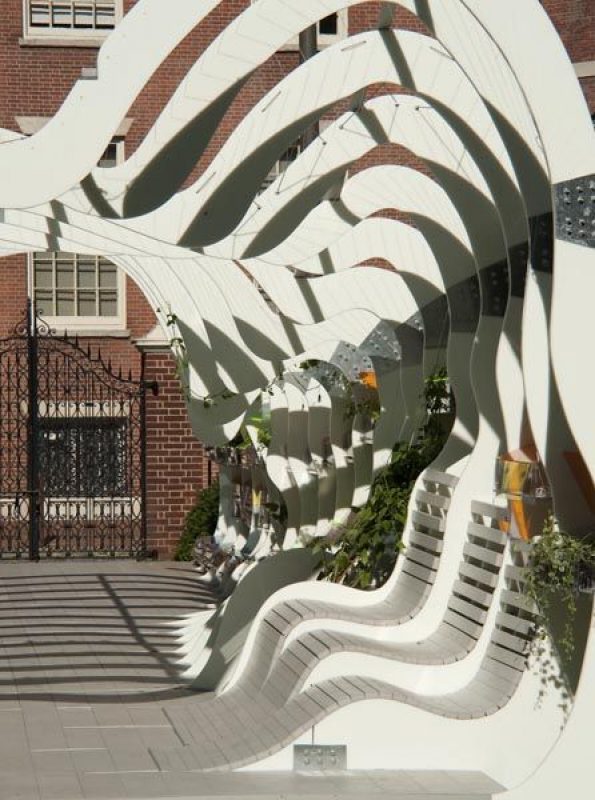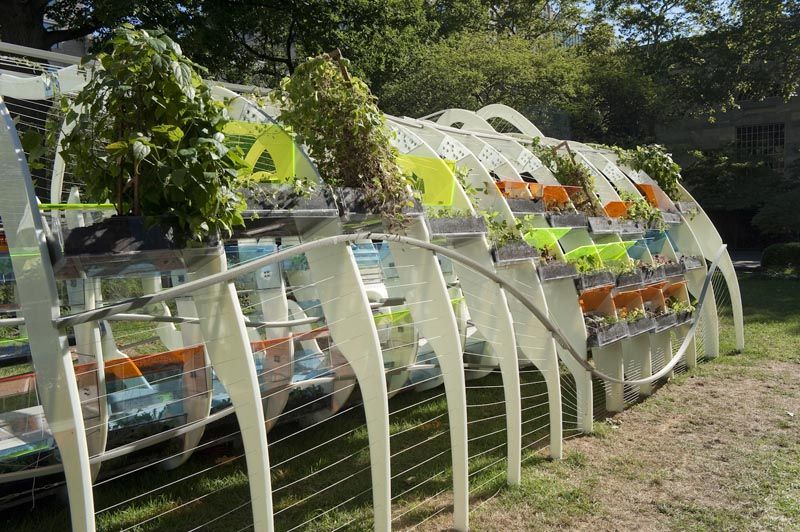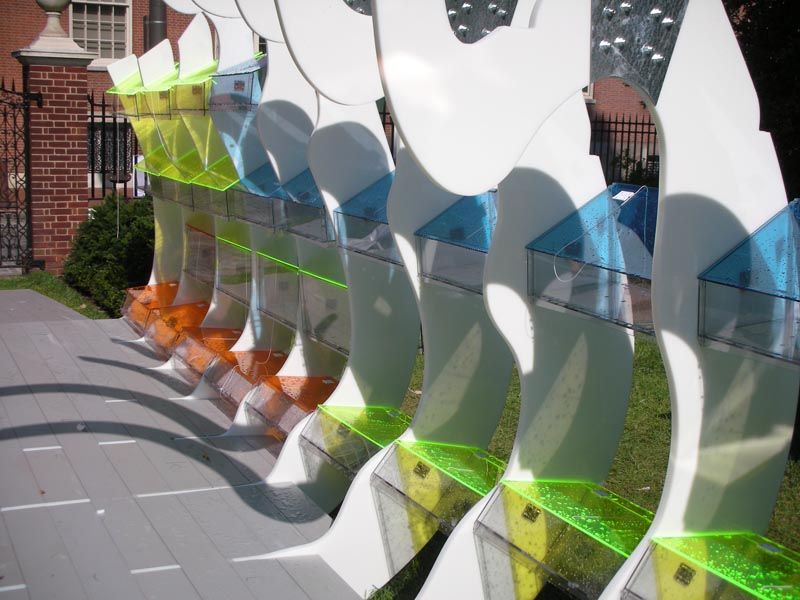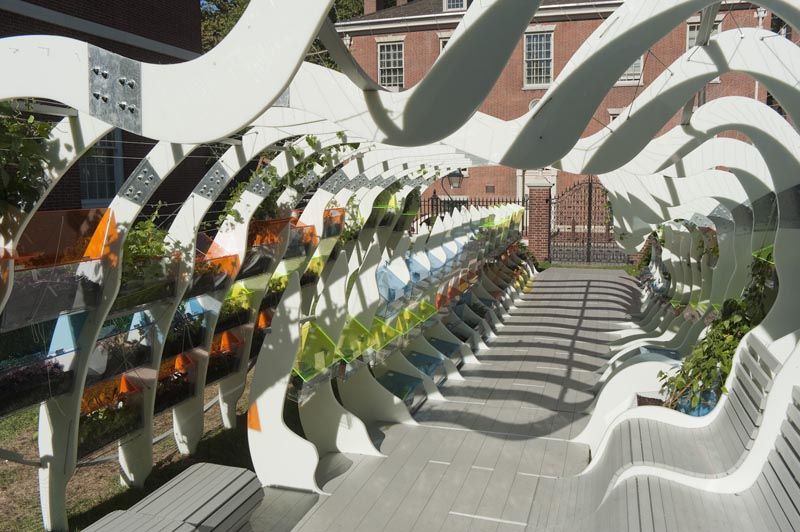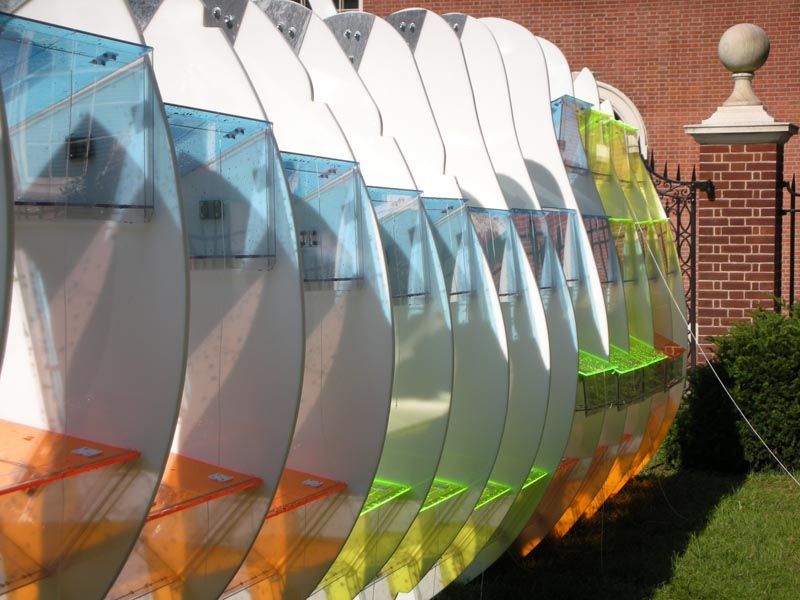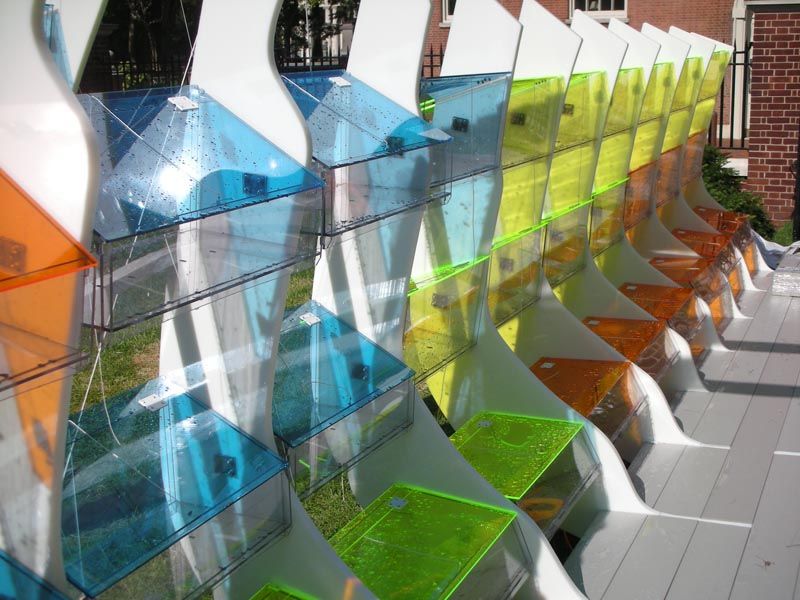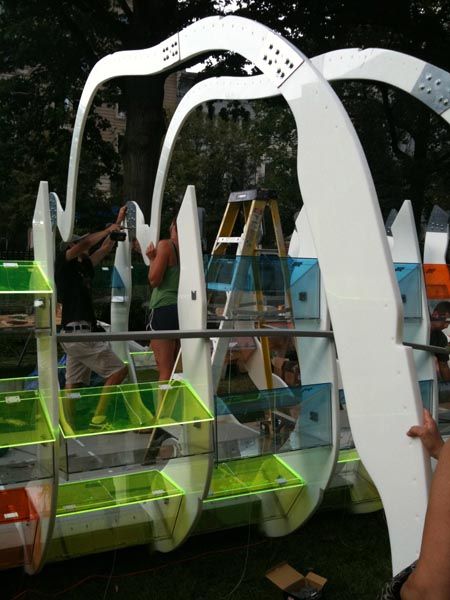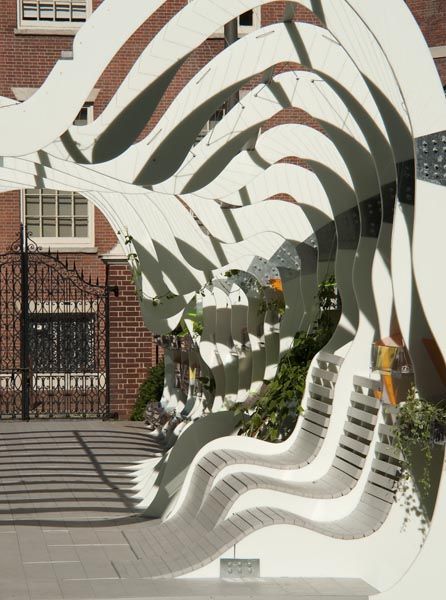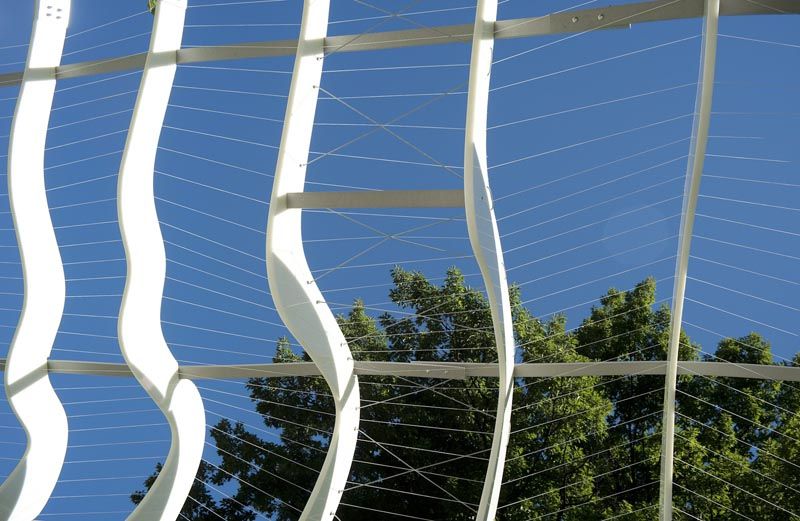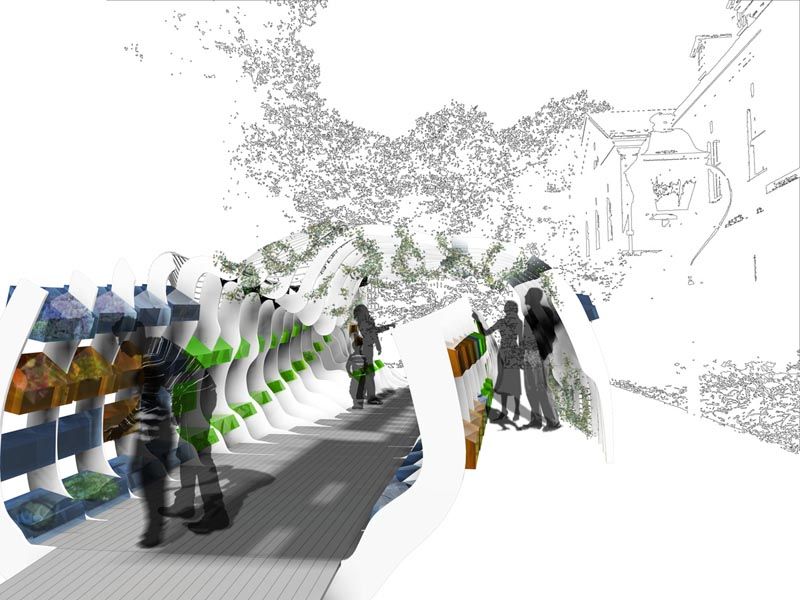Jenny Sabin designs a new outdoor greenhouse for the American Philosophical Society’s (APS) graden. Through utilization of digital design tools and recycled materials, the greenhouse is able to be conceived with a unique form while keeping it ecologically friendly. The structure, despite being designed as housing for foliage, also takes the form of a work of art as an outgrowth of the Museums exhibitions. Because it is outdoors, the lengthy structure requires no heat and uses the surrounding environment to promote the growth of the plants.
 The actual structure consists of sectioned foms that hold 110 transluscent, colored frames that are the actual container for the plants. Giving them the ability to be interchangeable also help when trying to rotate the plants when considering the changes in season.
The actual structure consists of sectioned foms that hold 110 transluscent, colored frames that are the actual container for the plants. Giving them the ability to be interchangeable also help when trying to rotate the plants when considering the changes in season.
This earthy pavilion enables users to peruse the various types of plants from the inside while offering seating to relax and enjoy the design. The architect and assistant professor at Cornell University’s College of Architecture, Jenny Sabin, is not new to these types of explorative designs.
In 2010, she received the Pew Fellowship for her work in architecture as it applies to the insights and theories derived from nature and science and how it can be implemente into the design of material structures.
Courtesy of © Jenny Sabin Studio
Courtesy of © Jenny Sabin Studio
Courtesy of © Jenny Sabin Studio
Courtesy of © Jenny Sabin Studio
Courtesy of © Jenny Sabin Studio
Courtesy of © Jenny Sabin Studio
Courtesy of © Jenny Sabin Studio
Courtesy of © Jenny Sabin Studio
Courtesy of © Jenny Sabin Studio



